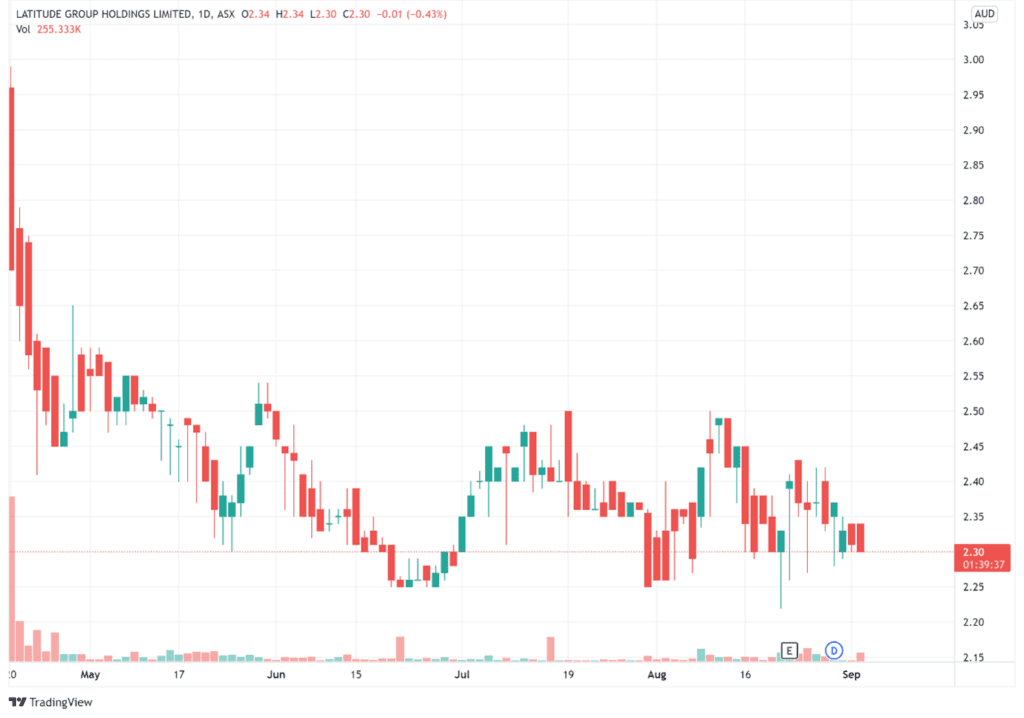The Latitude Group Holdings Ltd [ASX:LFS] is set to issue capital notes with a goal of raising $125 million.
LFS shares were slow to react to the news and barely budged all day.
At time of writing, the Latitude stock is exchanging hands for $2.30 a share.
Source: TradingView.com
What’s happening here?
Less than two weeks ago, the fintech giant posted solid 1H21 results and we saw a small climb in the share price.
But today, there’s nothing but tumbleweeds.
Year-to-date, Latitude is down more than 10% and it’s underperforming the market.
It’s possible that the stock is failing to attract new eyes right now.
But let’s focus on Latitude’s capital notes offer and explore how this could affect the company’s share price in the coming weeks…
How will Latitude’s capital notes work?
On the ASX, the capital notes will be quoted under the code LFSPA.
As stated in today’s release, these are being issued ‘as part of Latitude’s ongoing optimisation of funding and capital, with a view to improving flexibility in the Latitude Group’s capital structure.’
The capital notes will help Latitude chase incremental growth opportunities, such as complementary portfolios and platforms.
The rollout of L-Pay in Singapore and Malaysia was specifically mentioned in the release, as well as Latitude’s intention to keep driving organic growth within existing markets and products.
So what does the offer entail for investors?
It includes:
- An Institutional Offer made to Institutional Investors; and
- A broker firm offer for Australian resident retail and high net worth clients of syndicate brokers.
Take note that the Capital Notes are not being offered to the public. Retail investors will need to be a client of a syndicate broker to participate in this offer.
The capital notes are perpetual, subordinated, unsecured notes.
They will be scheduled to pay quarterly, cumulative, floating rate distributions, which will likely frank at the same fraction as Latitude’s ordinary share dividends.
The notes have some interesting key features such as a dividend stopper, a fully paid format (each capital note will have a face value of $100), and circumstantial convertibility.
There are many other important features to these notes, which I’d encourage interested investors to further investigate before choosing to get involved.
At present, it seems the market is still considering the fintech’s potential.
What’s next for the LFS share price?
The margin for distributions on the capital notes will be determined following a bookbuild (expected to be completed on 9 September 2021).
A replacement prospectus containing the margin is expected to be made available the day after.
So it will be interesting to see how the share price performs until then.
Latitude has 2.8 million customer accounts (as at 30 June 2021) and more than 5,500 merchant partners (with over 13,200 outlets) in Australia and New Zealand.
A stagnating share price likely isn’t cause for concern for bullish shareholders right now if Latitude can continue to grow and leverage its customer base.
And as Latitude Managing Director and CEO, Ahmed Fahour said last month, the company is ‘now the number two originator of new personal loans in Australia and one of the leaders in New Zealand.’
This is nothing to sneeze at. I’ll keep my eye on Latitude over the coming weeks and see how their next steps fare.
In the meantime, it might pay to take a broader look at the fintech industry.
While many exciting prospects abound on the market today, there are three fintech stocks in particular that we’ve profiled in a recent fintech report.
If you’re keen to read about them, you can check out my free report
Regards,
Kiryll Prakapenka,
For Money Morning
PS: Could this be the next Afterpay? Learn about three high-potential Aussie fintechs (and they’re trading right now for less than $1!) Click here to learn more


